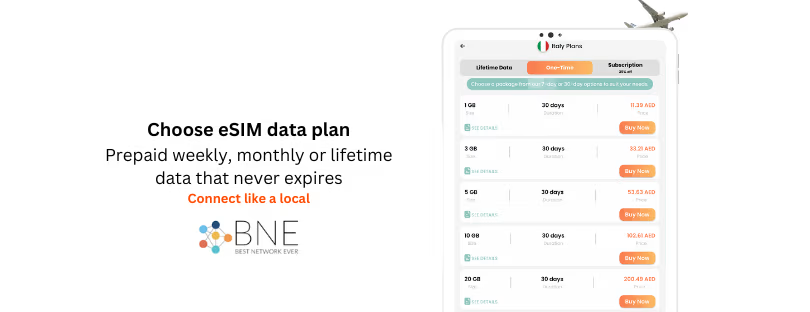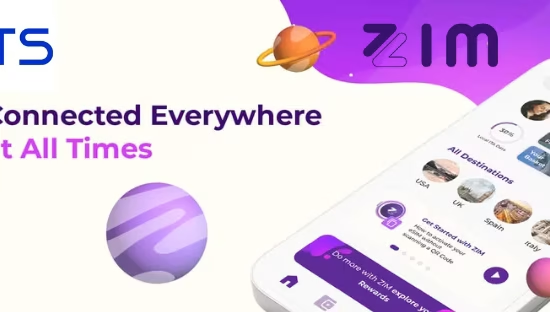
Why Roaming Is Big Business Again—and Getting Bigger
The roaming tariff market is undergoing a major transformation—driven by rapid technological advancements, shifting travel habits, and the global rollout of 5G. As international travel rebounds and mobile users demand faster, more seamless connectivity across borders, the business of roaming is becoming more critical than ever.
Recent data highlights just how fast this market is expanding and where it’s headed in the years to come.
The Roaming Tariff Market: A Snapshot
Imagine this: in 2023, the roaming tariff market was valued at a whopping USD 77.5 billion. Fast forward to 2032, and projections indicate it will soar to USD 140.3 billion. That’s a compound annual growth rate (CAGR) of 6.83% from 2024 to 2032, SNS Insider reports. But what’s fueling this impressive growth? Let’s unpack the key drivers.
5G Expansion: The Game Changer
Remember the days of waiting ages for a webpage to load while roaming? Those days are fading fast. The rollout of 5G technology is revolutionizing our mobile experiences, offering lightning-fast speeds and ultra-reliable connections. For travelers, this means seamless video calls, quick uploads of those envy-inducing travel photos, and smooth streaming of your favorite shows, no matter where you are. Telecom operators are hustling to provide competitive roaming packages that leverage 5G’s capabilities, enhancing user satisfaction and, in turn, boosting the market.
The Travel Boom: More Than Just Wanderlust
Post-pandemic, the world has seen a resurgence in travel. People are eager to explore new destinations, reconnect with loved ones, and conduct business face-to-face. This uptick in international travel naturally leads to a higher demand for roaming services. After all, staying connected is no longer a luxury—it’s a necessity. Whether it’s navigating unfamiliar streets using maps, translating foreign languages on the fly, or staying in touch with family, mobile connectivity is the unsung hero of modern travel.
eSIM Adoption: Simplifying Connectivity
Gone are the days of juggling multiple SIM cards or hunting down local ones upon arrival. The advent of eSIM technology allows travelers to switch between carriers digitally without the need for physical SIM cards. This flexibility not only simplifies the user experience but also encourages more people to opt for roaming services, knowing they can easily manage their connectivity options. It’s like having a universal key to global networks right in your phone.
IoT and M2M Communications: Beyond Human Interaction
The Internet of Things (IoT) isn’t just a buzzword; it’s reshaping industries. In sectors like automotive and logistics, devices constantly communicate with each other across borders. Think of smart cars that need real-time traffic updates or logistics companies tracking shipments worldwide. This machine-to-machine (M2M) communication relies heavily on seamless roaming services, opening up a lucrative segment in the roaming tariff market.
National vs. International Roaming: A Tale of Two Segments
In 2023, national roaming took the lead, accounting for 68% of the market’s revenue. This dominance is due to extensive domestic travel and agreements between telecom providers to ensure coverage in remote areas. However, international roaming is catching up fast, driven by increased global travel and the convenience of eSIM technology. As more people venture abroad, the demand for affordable and reliable international roaming options is set to surge.
Distribution Channels: Retail Roaming in the Spotlight
When it comes to how roaming services are offered, retail roaming has been in the limelight. Travelers often prefer purchasing roaming packages directly from their home carriers for the sake of convenience and trust. This trend has prompted telecom companies to craft attractive retail roaming plans, ensuring customers remain loyal and satisfied.
Regional Insights: Europe Leads, Asia-Pacific Accelerates
Europe dominated the market and accounted for 43% of the revenue share in 2023, owing to stringent regulatory conditions, higher frequency of travel, and established telecom infrastructure in the region. The implementation of the “Roam Like at Home” policy in the European Union has eliminated extra charges for intraregional roaming, thereby encouraging more users to consider the service. Europe also has major telecom operators, extensive deployment of 5G, and wider adoption of eSIM.
Asia-Pacific is expected to register the fastest CAGR during the forecast period. The rapidly increasing level of digitalization, a growing number of international travels, and increasing penetration of mobile phones are expected to act as major propellants for tariff roaming. Increasing business travel, tourism, and cross-border trade are other factors that are accelerating this demand. China, India, and ASEAN nations are witnessing a high level of international travel, which is resulting in a high adoption of roaming services. Wider deployment of 5G, slumping prices of smartphones, and increasing adoption of eSIM, coupled with various government initiatives to control the charges levied on roaming, are expected to drive the market.
Challenges on the Horizon
It’s not all smooth sailing. Telecom operators face challenges like intense competition and varying regulations across countries. Balancing affordable pricing with profitability requires strategic planning and innovation.
Alternative connectivity options, including local SIM cards, Wi-Fi hotspots, and over-the-top communication apps such as WhatsApp or Zoom, are straining competition in the roaming tariff market. To avoid exorbitant roaming costs, numerous travelers are purchasing temporary local SIM cards or data-only plans. In addition, the presence of free Wi-Fi in public areas and commercial centers limits the use of traditional roaming services. Competition has ratcheted up even more due to the emergence of travel SIM providers and global connectivity solutions that support flat-rate data plans. To overcome this, telecom operators have to innovate with affordable and flexible roaming options that are designed to enhance customer satisfaction, cost-effectively and ensure borderless connectivity.
Moreover, as consumers become more tech-savvy, their expectations for seamless and cost-effective roaming services continue to rise.
Key Players Shaping the Market
Several major telecommunications companies are at the forefront of this growth, offering innovative roaming solutions to meet the evolving needs of global travelers. Notable players include:
- Vodafone Group: Provides Vodafone Roaming Services, facilitating seamless connectivity for customers across various regions.
- AT&T Inc.: Offers the International Day Pass, allowing users to access their domestic plan’s features while abroad.
- Verizon Communications: Features TravelPass, enabling customers to use their domestic talk, text, and data allowances internationally for a daily fee.
- T-Mobile US, Inc.: Provides Magenta Max Roaming, offering extensive international roaming benefits, including unlimited data and texting in numerous countries.
- Orange S.A.: Offers Orange Travel Pass, designed to keep travelers connected with calls, texts, and data while abroad.
- Telefónica S.A.: Provides Movistar Roaming Plans, catering to customers’ international communication needs with various packages.
- Deutsche Telekom AG: Features Global Roaming Plus, ensuring customers stay connected with comprehensive roaming services worldwide.
- China Mobile Limited: Offers GoTone Roaming Packages, facilitating international connectivity for its subscribers.
- China Telecom Corporation: Provides the 5G Global Roaming Plan, leveraging advanced technology to offer high-speed connectivity abroad.
- China Unicom: Features international roaming service, enabling users to stay connected across borders.
- Reliance Jio: Offers Jio International Roaming Packs provide affordable options for customers traveling overseas.
- Bharti Airtel: Provides Airtel World Pass, allowing seamless connectivity in multiple countries with a single plan.
- Singtel: Offers ReadyRoam, catering to travelers with convenient roaming packages across various destinations.
- Telstra: Features the International Roaming Day Pass, enabling customers to use their Australian plan’s inclusions while abroad for a daily fee.
- NTT Docomo: Provides World Wing Roaming, ensuring connectivity for users traveling internationally.
These companies are instrumental in driving the roaming tariff market forward, continually innovating to enhance user experience and expand their global reach.
Looking Ahead: The Future of Roaming
The horizon looks promising. Advancements in IoT and M2M communications are set to open new avenues for roaming services, especially in industries requiring constant connectivity. Additionally, the adoption of flexible roaming plans and continuous improvements in customer experience will be pivotal in sustaining growth.
Final Thoughts
Staying connected while traversing the globe has transitioned from a luxury to a necessity. The roaming tariff market’s projected growth reflects our collective need for seamless communication, regardless of borders. As technology evolves and travel becomes more accessible, we can anticipate even more innovative solutions to keep us connected, no matter where our adventures take us.
So, next time you’re sipping espresso in a Parisian café or hiking through the Andes, take a moment to appreciate the intricate web of technology and agreements that keep you connected. Safe travels and happy roaming!













